What we know about the Conception’s escape routes
The diving boat Conception caught fire off the Santa Barbara coast Monday morning, leading to the deadliest maritime disaster in modern California history. As investigators try to find the cause, the ship’s design and escape routes are drawing scrutiny.
‘The best of its kind’

The 75-foot diving boat was custom made in 1981 by a shipbuilder in Long Beach and had ferried scuba divers touring the Channel Islands from its home port in Santa Barbara for decades. Its final voyage started last Saturday for a Labor Day cruise with 33 passengers and a crew of six aboard.

Bunks, showers

Kitchen, dining area
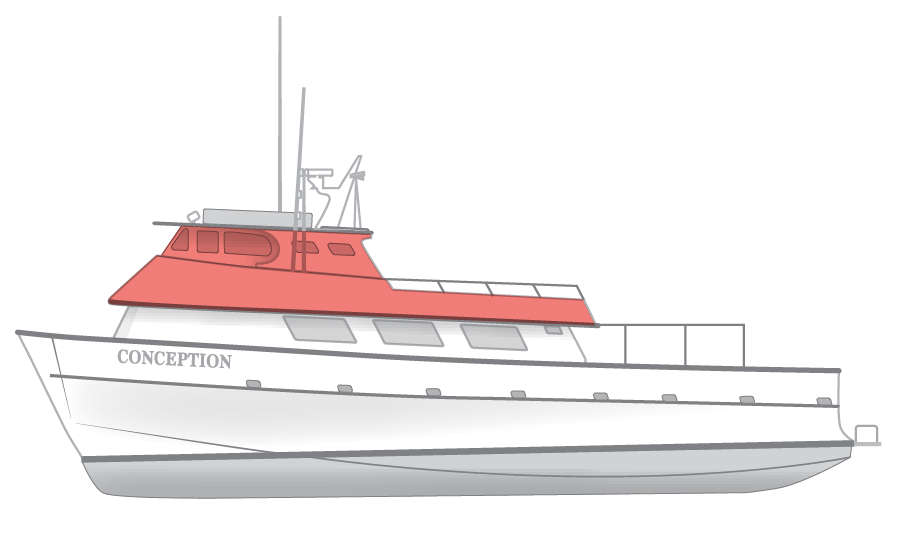
Wheelhouse
The boat had three levels — the lowest level with bunk beds and showers, a main deck with a covered galley toward the front, and a top deck where the ship was steered.
The lead investigator probing the disaster expressed concerns about the escape routes out of the Conception’s lowest deck. Here’s what we know.
Asleep below deck
Authorities believe all passengers and a single crew member were asleep in bunk beds on the ship’s bottom deck at the time of the fire. The beds were under the galley, a covered area at the center of the main deck with a kitchen, dining area and bathrooms.
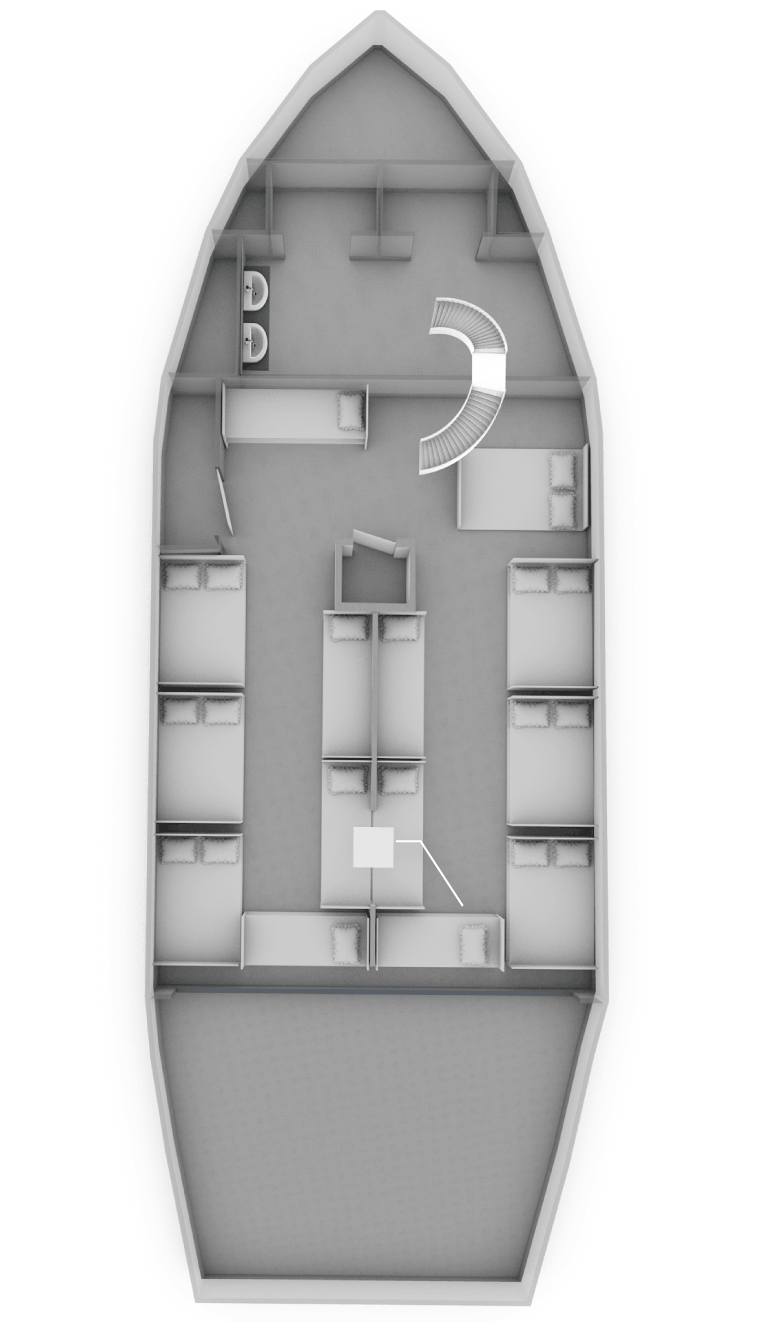
Shower
room
Stairs
Bunk
room
Utility
closet
Change
room
Bed
Escape
hatch
Engine
room
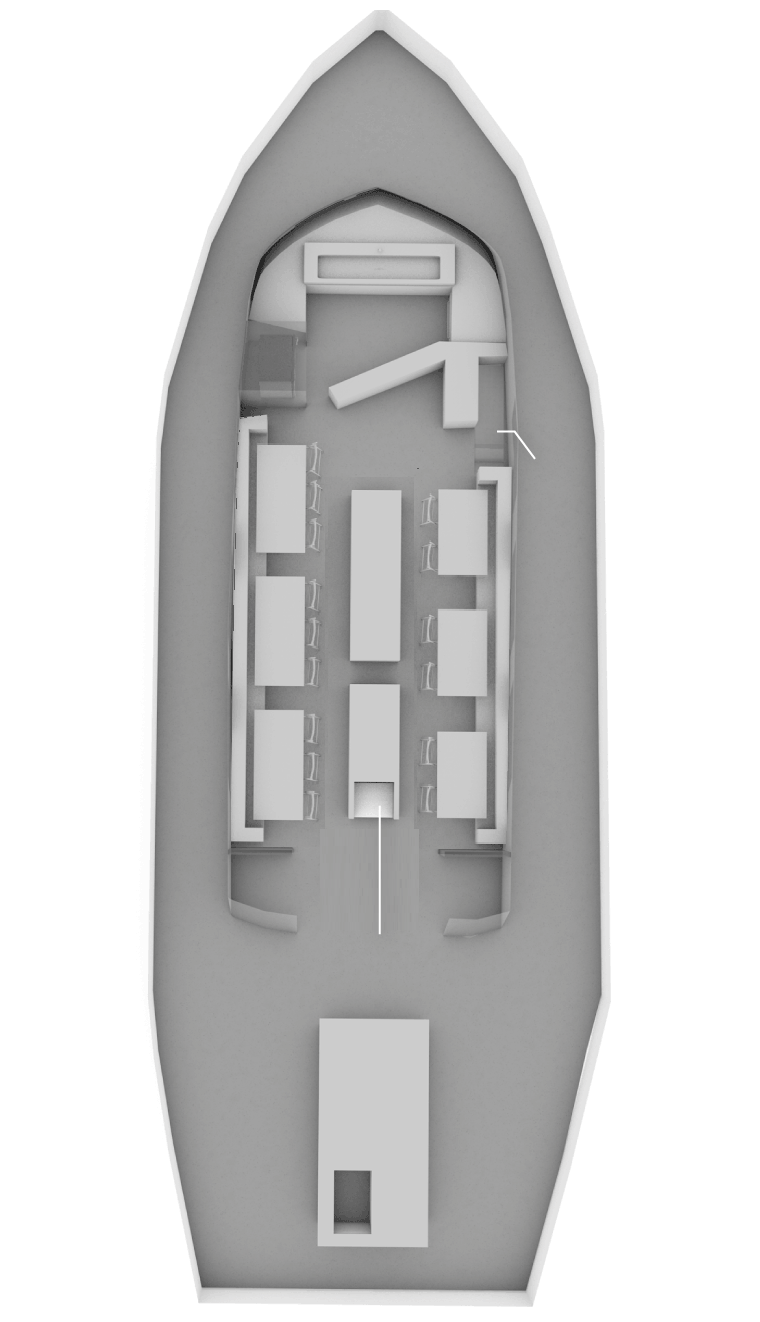
Kitchen
Counter
Dining area
Stairwell
Seating
Counter
Restroom
Restroom
Escape
hatch
Outdoor
area
Only two ways out
There were two ways in and out of the bunk room on the lower level of the ship — a spiral staircase near the front and an escape hatch above the rear bunks. Both led up to the same area: the covered galley. According to federal investigators, a crew member who attempted to rescue passengers found the galley area “engulfed in flames,” with no way in or out.
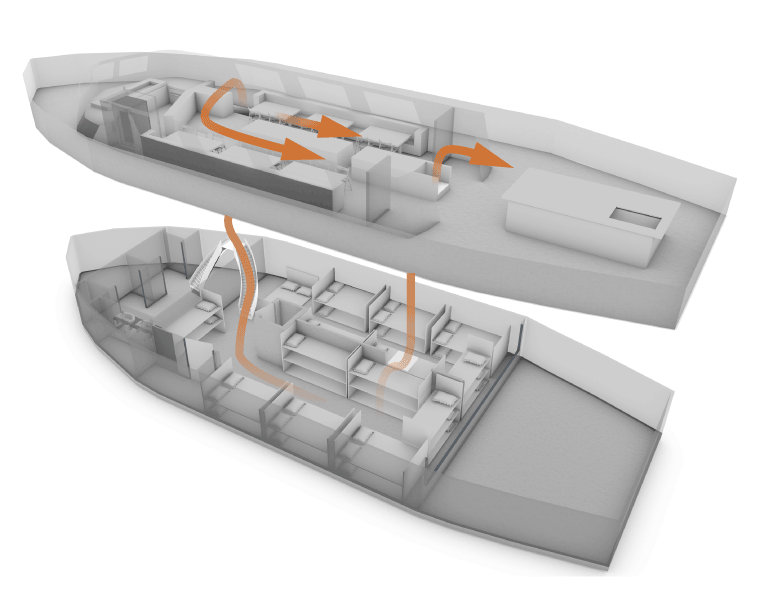
Stairs
Escape
hatch

Stairs
Escape
hatch
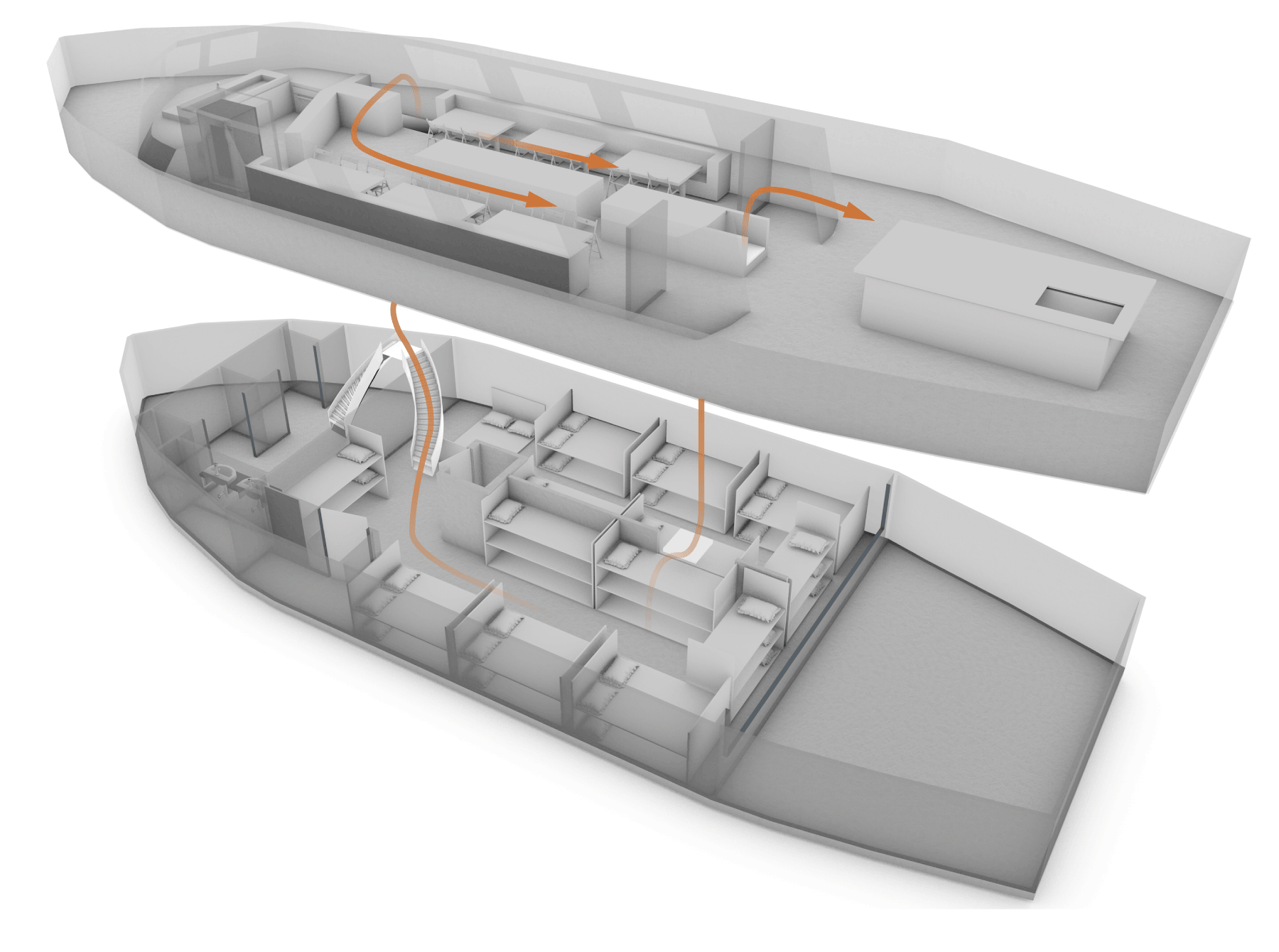
Stairs
Escape
hatch
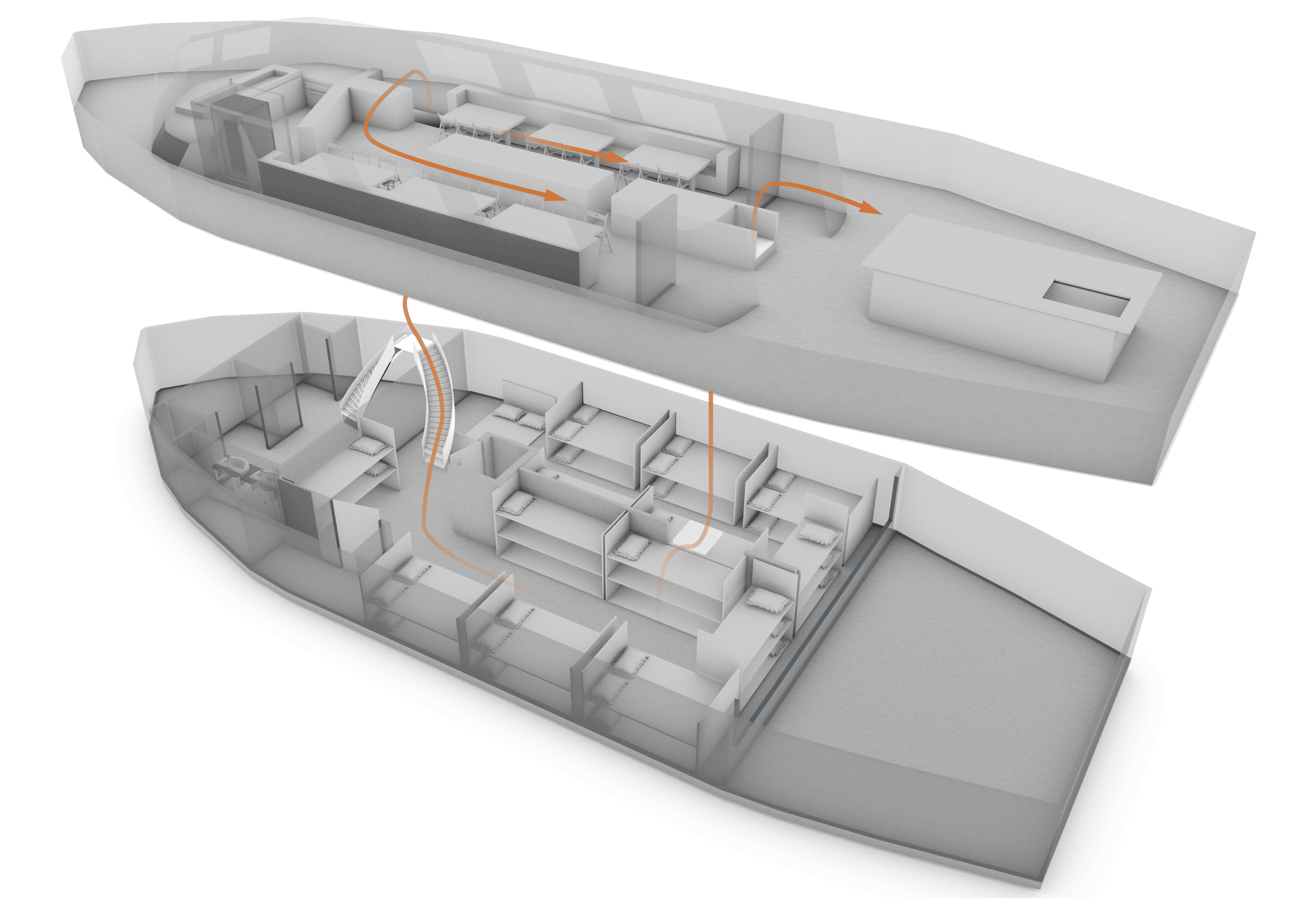
Stairs
Escape
hatch
‘A compliant fire trap’
Some California divers have dubbed the ship’s configuration a “cattle boat” style of excursion, because of the tight space and lack of staterooms and other cabin amenities.
John McDevitt, a former assistant fire chief, accredited marine surveyor and chair of a National Fire Protection Assn. committee on boat protection, questioned why both egress points – the stairwell and the hatch – deposited passengers into the galley and adjacent dining area.
“When you put two exits into the same common area, you are not providing two means of egress – it’s still only one,” he said.
Despite the Conception passing its most recent Coast Guard inspection, McDevitt and other experts have questioned its design. Read more expert reaction in today’s Times investigation.
Sources: Truth Aquatics, Times reporting
Credits: Times Staff Writers Matt Hamilton, Kim Christensen and Susanne Rust contributed reporting